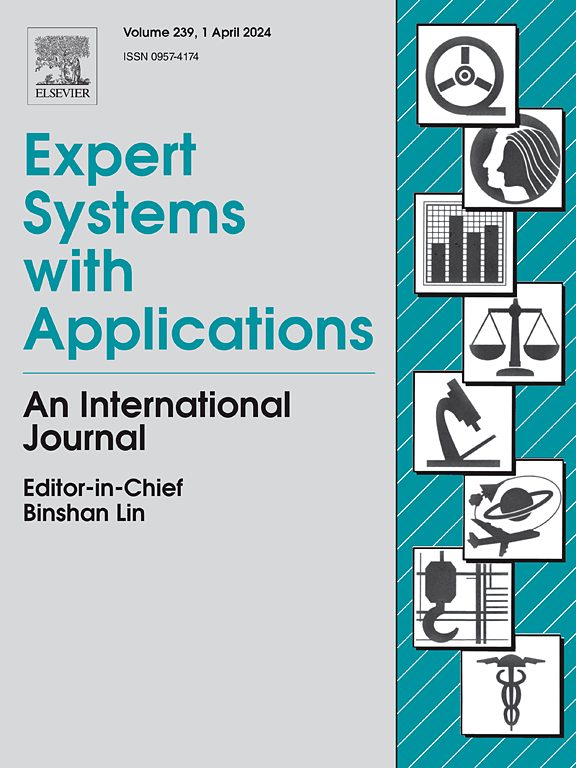Expert system for non-technical loss detection in power distribution grids using particle swarm optimization and nested power flow integration
IF 7.5
1区 计算机科学
Q1 COMPUTER SCIENCE, ARTIFICIAL INTELLIGENCE
引用次数: 0
Abstract
Non-Technical Losses in power distribution grids, primarily caused by electricity theft and meter inaccuracies, pose a significant challenge to utility companies, impacting revenue and grid stability. This paper introduces a novel expert system integrating nested Power Flow analysis with swarm intelligence for accurate Non-Technical Losses detection and localization in distribution grids. The proposed system leverages smart meter data, grid topology, and substation transformer readings to formulate an optimization problem in which the Active Power and Reactive Power consumption of one or more consumers is estimated using Particle Swarm Optimization. A key feature of the system is its adaptability to various operational scenarios, such as grid size, topology uncertainty, and distributed energy resource penetration. Extensive experimental results confirm the effectiveness of the proposed NTL detection method. In simulated scenarios, the worst-case Mean Absolute Error for Active Power estimation is limited to 0.1391 kW, with a corresponding mean actual consumption of 1.004 kW. For Reactive Power, the Mean Absolute Error does not exceed 0.0175 kVAr, relative to a mean consumption of 0.1072 kVAr. When evaluated on real consumption data, the worst-case Mean Absolute Error for Active Power across all smart meters is 0.1028 kW, with a mean actual consumption of 5.1333 kW, while for Reactive Power the worst-case Mean Absolute Error reaches 0.1385 kVAr against a mean consumption of 2.3433 kVAr. Furthermore, in the specific case where real active and reactive consumption is zero the proposed method maintains Mean Absolute Error values of 0.8095 kW for Active power and 0.0944 kVAr for Reactive power, thus verifying its reliable performance in avoiding false positives.
基于粒子群优化和嵌套潮流集成的配电网非技术损耗检测专家系统
配电网的非技术损失主要由电力盗窃和仪表不准确引起,对公用事业公司构成重大挑战,影响收入和电网稳定性。本文介绍了一种将嵌套潮流分析与群体智能相结合的新型专家系统,用于配电网非技术损耗的精确检测和定位。提出的系统利用智能电表数据、电网拓扑和变电站变压器读数来制定一个优化问题,其中一个或多个消费者的有功功率和无功功率消耗使用粒子群优化估计。该系统的一个关键特征是其对各种操作场景的适应性,例如网格大小、拓扑不确定性和分布式能源渗透。大量的实验结果证实了所提出的NTL检测方法的有效性。在模拟场景中,有功功率估计的最坏情况平均绝对误差被限制在0.1391 kW,对应的平均实际用电量为1.004 kW。对于无功功率,相对于平均消耗0.1072千瓦时,平均绝对误差不超过0.0175千瓦时。当根据实际用电量数据进行评估时,所有智能电表中有功功率的最坏情况平均绝对误差为0.1028 kW,平均实际用电量为5.1333 kW,而无功功率的最坏情况平均绝对误差达到0.1385 kVAr,平均用电量为2.3433 kVAr。此外,在实际有功和无功功耗均为零的具体情况下,该方法的有功平均绝对误差保持在0.8095 kW,无功平均绝对误差保持在0.0944 kVAr,从而验证了该方法在避免误报方面的可靠性能。
本文章由计算机程序翻译,如有差异,请以英文原文为准。
求助全文
约1分钟内获得全文
求助全文
来源期刊

Expert Systems with Applications
工程技术-工程:电子与电气
CiteScore
13.80
自引率
10.60%
发文量
2045
审稿时长
8.7 months
期刊介绍:
Expert Systems With Applications is an international journal dedicated to the exchange of information on expert and intelligent systems used globally in industry, government, and universities. The journal emphasizes original papers covering the design, development, testing, implementation, and management of these systems, offering practical guidelines. It spans various sectors such as finance, engineering, marketing, law, project management, information management, medicine, and more. The journal also welcomes papers on multi-agent systems, knowledge management, neural networks, knowledge discovery, data mining, and other related areas, excluding applications to military/defense systems.
 求助内容:
求助内容: 应助结果提醒方式:
应助结果提醒方式:


